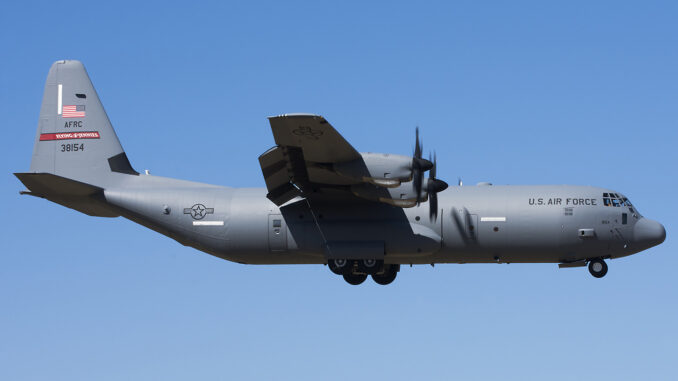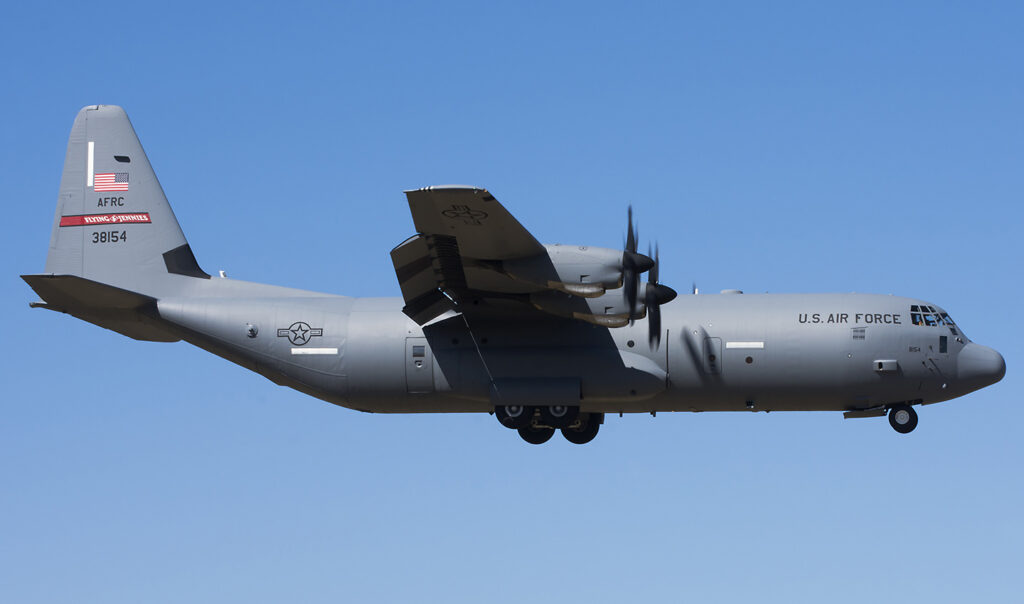
The US Air Force is looking for on-board defence systems to protect its transport aircraft against small drones during flight and ground operations.
The US Air Force is exploring solutions for equipping its transport aircraft with Small Unmanned Aerial Systems (C-sUAS). The demand is mainly for group 1 and 2 UAVs, with the capability extended to group 3 UAVs. The systems required must protect aircraft during critical phases of flight and ground operations, while minimising the risk of interference with friendly aircraft or civil environments. A response to this request is expected by 28 August.
Increasing need for defences against drones
Contextualisation of the drone threat
Small drones, classified by the Pentagon into groups 1 to 5 according to their size, represent a growing threat to military and civilian operations. Group 1 and 2 drones, the smallest, are of particular concern because they are easy to acquire and use for reconnaissance or attack missions. Their proliferation, both in armed conflicts and for civilian use, is prompting the US Air Force to develop effective countermeasures to protect its transport aircraft.
In 2023, the US Air Force reported a significant increase in incidents involving drones, particularly in conflict zones such as Ukraine and the Middle East. These incidents show the importance of robust defences to avoid disruption to critical missions.
Existing defence technologies and challenges
Currently, US Air Force transport aircraft are equipped with defensive systems such as decoys and laser jammers to counter missile threats. However, these technologies are not always effective against drones, which require specific solutions. New defence systems must be able to detect, identify and neutralise drones without causing collateral damage or interference with friendly systems.
For example, defence systems must be able to distinguish between an enemy drone and a civilian or allied drone, especially in situations where transport aircraft could be involved in humanitarian missions or in dense civilian environments.

Technical requirements and specifications
Critical flight phases and ground operations
The US Air Force requirement focuses on the critical phases of flight operations below 4,877 metres (16,000 feet) as well as ground operations, such as aircraft taxiing. Systems must be able to protect aircraft during these vulnerable moments when they are most exposed to drone attacks.
Kinetic and non-kinetic solutions
The US Air Force is exploring kinetic solutions (physical destruction of drones) and non-kinetic solutions (jamming, spoofing, etc.). Non-kinetic solutions are particularly important in civilian environments to avoid collateral damage. For example, during a humanitarian mission, it would be counter-productive to neutralise civilian drones delivering aid.
Systems must also be able to minimise interference with GPS systems or other electronic equipment, especially when civilian aircraft or VIP aircraft (such as the Vice-President of the United States) are in the vicinity.
Mobility and integration
UAV defence systems must be easy to integrate into transport aircraft, without taking up excessive space or compromising load capacity. They must be easy to deploy, even from aircraft without an access ramp. For example, portable solutions that can be quickly installed and operational are essential for rampless aircraft.
Examples of technologies under development
Companies such as InfiniDome are already developing technologies to protect GPS signals against jamming and spoofing. Their products, such as GPSdome-1 and GPSdome-2, are examples of affordable and effective solutions that can be adapted to the needs of the US Air Force. These technologies demonstrate that it is possible to develop robust defence systems without prohibitive costs.
Strategic implications and outlook
Enhanced security for transport operations
The development and integration of UAV defence systems will enhance the security of US Air Force transport operations. This is particularly critical in conflict zones where drone threats are ubiquitous. Effective systems will protect crews and critical cargo, ensuring continuity of logistics and support operations.
Impact on humanitarian and civil missions
The ability to distinguish between enemy and friendly drones, as well as non-kinetic solutions, will have a positive impact on humanitarian missions and operations in civilian environments. This will enable relief and support operations to be carried out without the risk of harming civilian or humanitarian efforts.
Future innovations and industrial collaborations
The US Air Force encourages innovation and collaboration with industry to develop drone defence solutions. This collaboration will stimulate technological innovation and could lead to significant advances in electronic warfare and air defence.
The US Air Force’s demand for drone defence systems reflects the growing need to protect transport aircraft against modern threats. The development of effective and integrable solutions will contribute to the security of military and civilian operations, while stimulating technological innovation in the defence sector.
War Wings Daily is an independant magazine.